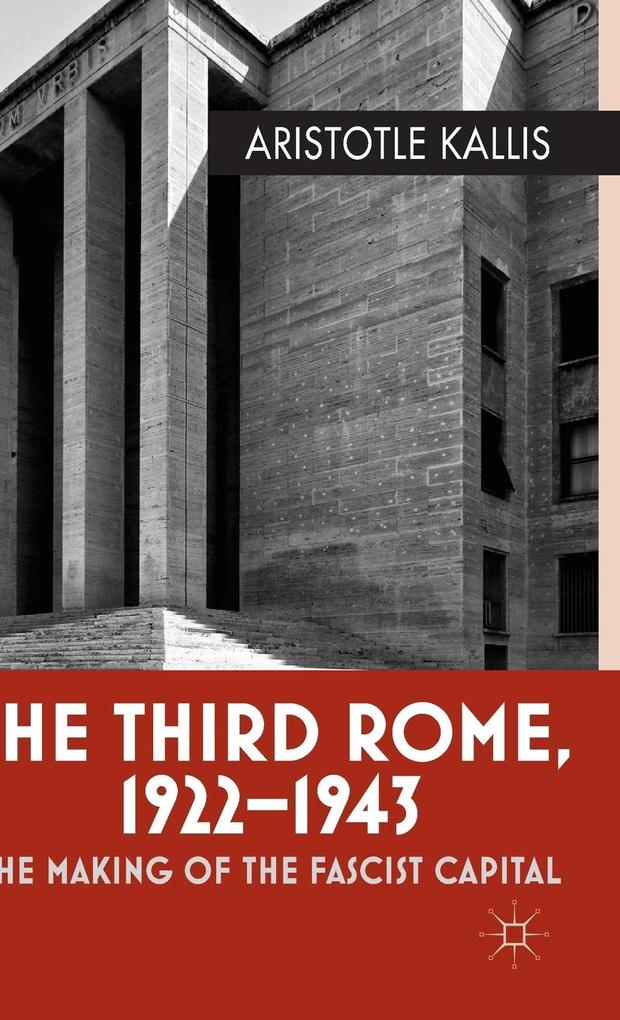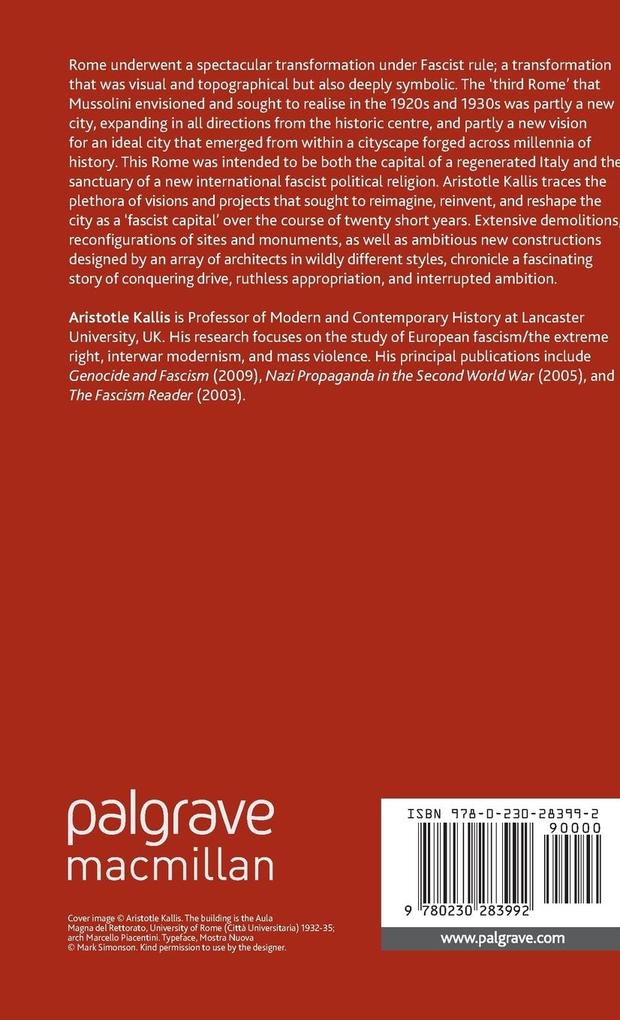
Zustellung: Do, 05.06. - Di, 10.06.
Versand in 1-2 Wochen
VersandkostenfreiBestellen & in Filiale abholen:
What kind of city was the Fascist 'third Rome'? Imagined and real, rooted in the past and announcing a new, 'revolutionary' future, Fascist Rome was imagined both as the ideal city and as the sacred centre of a universal political religion. Kallis explores this through a journey across the sites, monuments, and buildings of the fascist capital.
Inhaltsverzeichnis
Introduction 1. The Fascist Conquest of Rome 2. Fascism and the City: Architecture and Urban Eutopia 3. Fascism and Romanita: Framing the Ancient Imperial City 4. Fascism and the 'City of the Popes' 5. The Fascist Layer (I): The Quest for 'Signature' Buildings 6. The Fascist Layer (II): Building for Grandeur and Necessity 7. Fascism in Mostra: Exhibitions as Heterotopias 8. Rome and the Dream of Fascist Universalism Conclusion
Produktdetails
Erscheinungsdatum
29. Juli 2014
Sprache
englisch
Seitenanzahl
324
Autor/Autorin
Aristotle Kallis
Verlag/Hersteller
Produktart
gebunden
Abbildungen
XIV, 324 p.
Gewicht
531 g
Größe (L/B/H)
223/144/27 mm
ISBN
9780230283992
Entdecken Sie mehr
Bewertungen
0 Bewertungen
Es wurden noch keine Bewertungen abgegeben. Schreiben Sie die erste Bewertung zu "The Third Rome, 1922-1943" und helfen Sie damit anderen bei der Kaufentscheidung.











